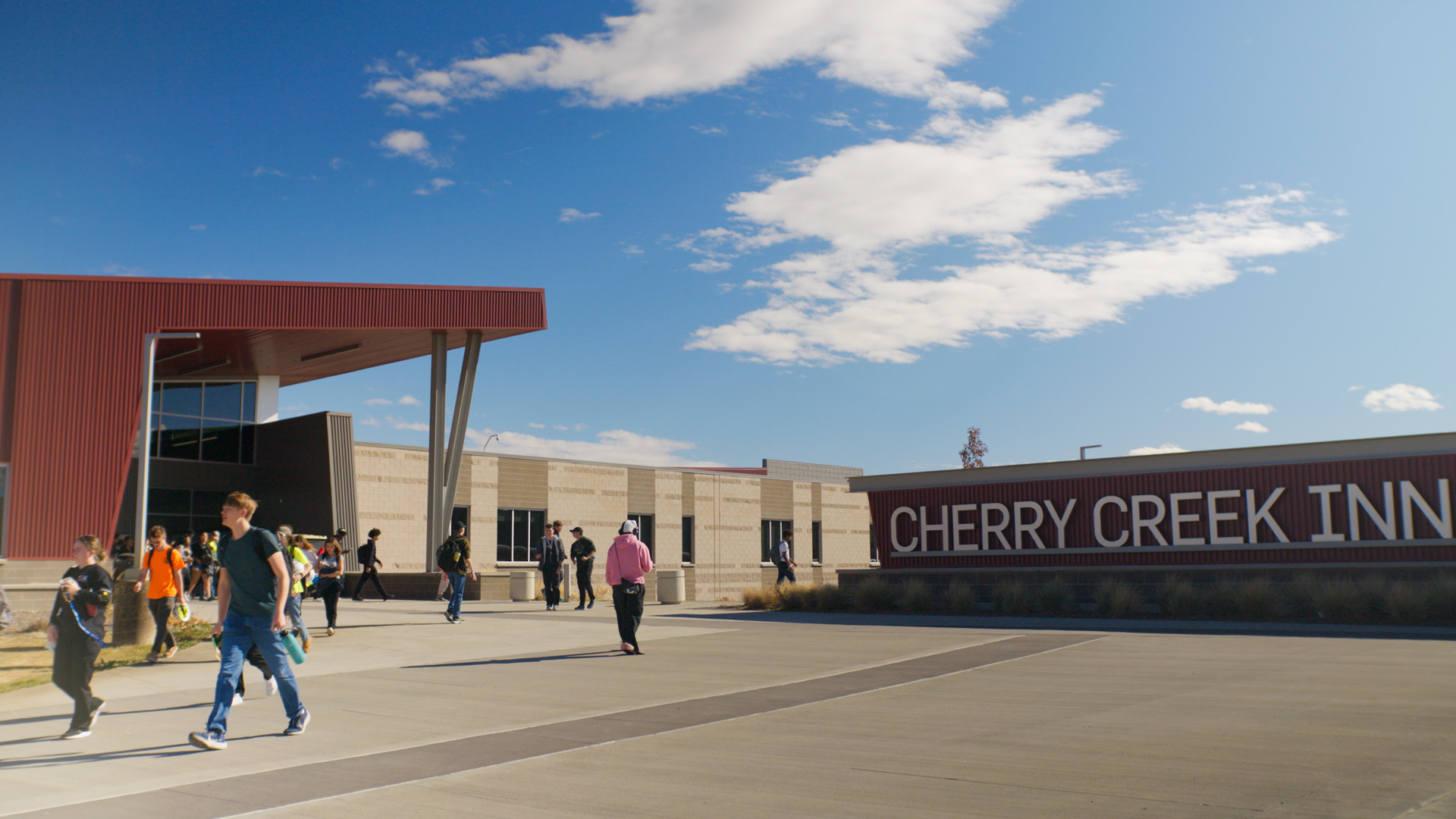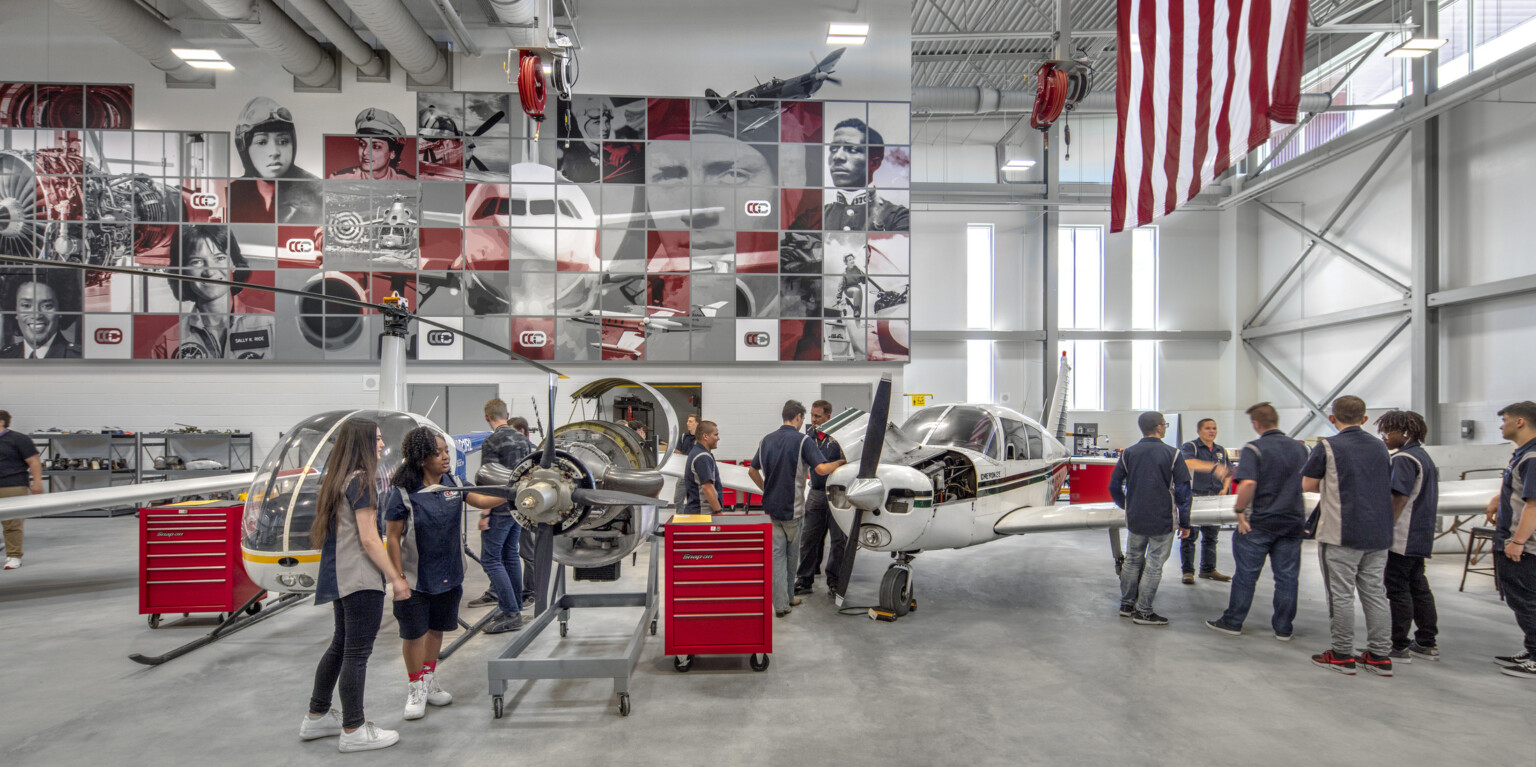
At Cherry Creek Innovation Center, students are immersed in a number of career pathways through applied learning.

Designing a CTE facility involves two crucial elements. First, we must consider the teaching and learning programs that will be employed, and second, we must pay attention to the physical environment of the facility. It’s evident but crucial in education design that these two components work in harmony.
The built environment should align with the school’s educational programs. We can create an incredibly innovative facility, but if it doesn’t match the vision of its teachers, students, and local industry, it will not reach its full potential.
Our approach involves leveraging our BOLD™ — Bridging Organization, Leadership, and Design— services. Our BOLD team consists of experts in teaching and learning who aim to understand each school’s vision and goals for its students. Throughout the design process, the BOLD team interprets and translates this vision into the physical environment.
When you combine a forward-thinking, adaptable facility with educators who champion the learning environment, you achieve maximum impact on student outcomes. This is how we measure success.
One of the most unique pieces of designing CTE facilities is getting the community involved. We want to see these students graduate, get licensed, certified, or whatever their personal career tract calls for, and then enter the workforce or an advanced degree program.
At Summit Technology Academy, which is located at the Missouri Innovation Campus, students are exposed to career paths in engineering, computer science, health science, amongst many others. The school’s curriculum allows students to explore different career opportunities, while inviting community partners to help students further affirm their interest in that specific career and education path. This better prepares students to make informed decisions for what comes after their prep years. This is seen in 90% of STA graduates pursuing a two or four-year degree, 70% of which are studying in a field they discovered at STA.
Every community is different and one of the first things we do is seek to understand the intricacies that make that community unique. As we’re designing a CTE facility, we are listening to the school district, local industry partners, and other stakeholders to ensure the center is a medium for innovation and future opportunities. These partnerships are mutually beneficial as students get to learn from tangible experiences and local businesses get connected directly with future employees to influence the direction of industry.
Palo Verde Generating Station is one of the largest nuclear energy facilities in the United States and is located near Phoenix. After realizing a shortage in its talent pipeline and general lack of industry awareness, Palo Verde saw an opportunity to partner with Western Maricopa Education Center, a career and technical education institution in Phoenix. This partnership was the genesis of West-MEC’s two-year energy and industrial technology program. It opens the door to students who want to pursue a career in energy or informs those who may not have known that a career in energy was available to them, while at the same time allowing Palo Verde and other industry partners to educate these students on career opportunities and build a well-trained talent pipeline.
As clients inform our design team and push us to solve their critical needs, we connect them with our network of CTE clients across the country. Our web of industry partners and school districts are a true differentiator that makes us leaders in designing world class CTE facilities.
The future of CTE is paved with facilities that enable adventurous lifelong learners equitable career opportunities without potentially taking on hundreds of thousands of dollars in student loan debt. We also use design as a tool and resource for kids to discover what their career aspirations are.
To achieve this, we emphasize transparency and on-demand learning. An example can be found at Cherry Creek Career Innovation Academy, where all learning pathways are made physically visible in our design and accessible via a multi-disciplinary experience. While it may appear simple, creating an environment that visually connects all pathways together allows students to more efficiently window shop their future.

At Cherry Creek Innovation Center, students are immersed in a number of career pathways through applied learning.
It’s not limited to classroom spaces alone. The in-between spaces are equally crucial, nurturing interdisciplinary collaboration that enhances the student experience, extending beyond a single pathway. This approach also mirrors the real-world experience of working in the marketplace.
Research indicates that Generation Z may change careers up to 10 times. These students are entering a future where they may want or need to pursue multiple careers, often without the requirement for traditional four-year or two-year degrees. It’s our responsibility to design facilities that can respond to the demands of industry and providing innovation by thinking about education in completely different ways.
Is your school district ready to bring future-focused career and technical learning opportunities to its students?